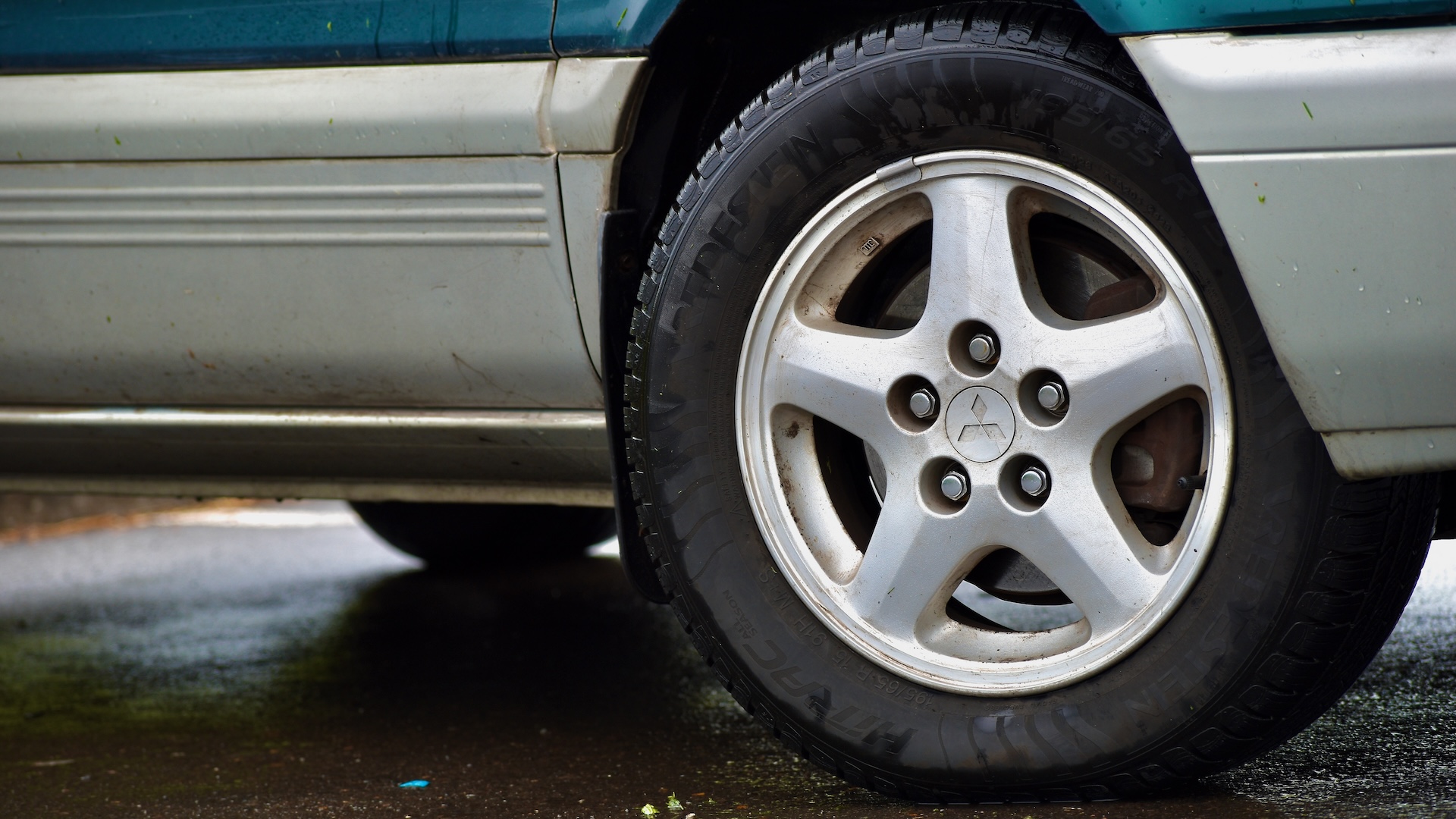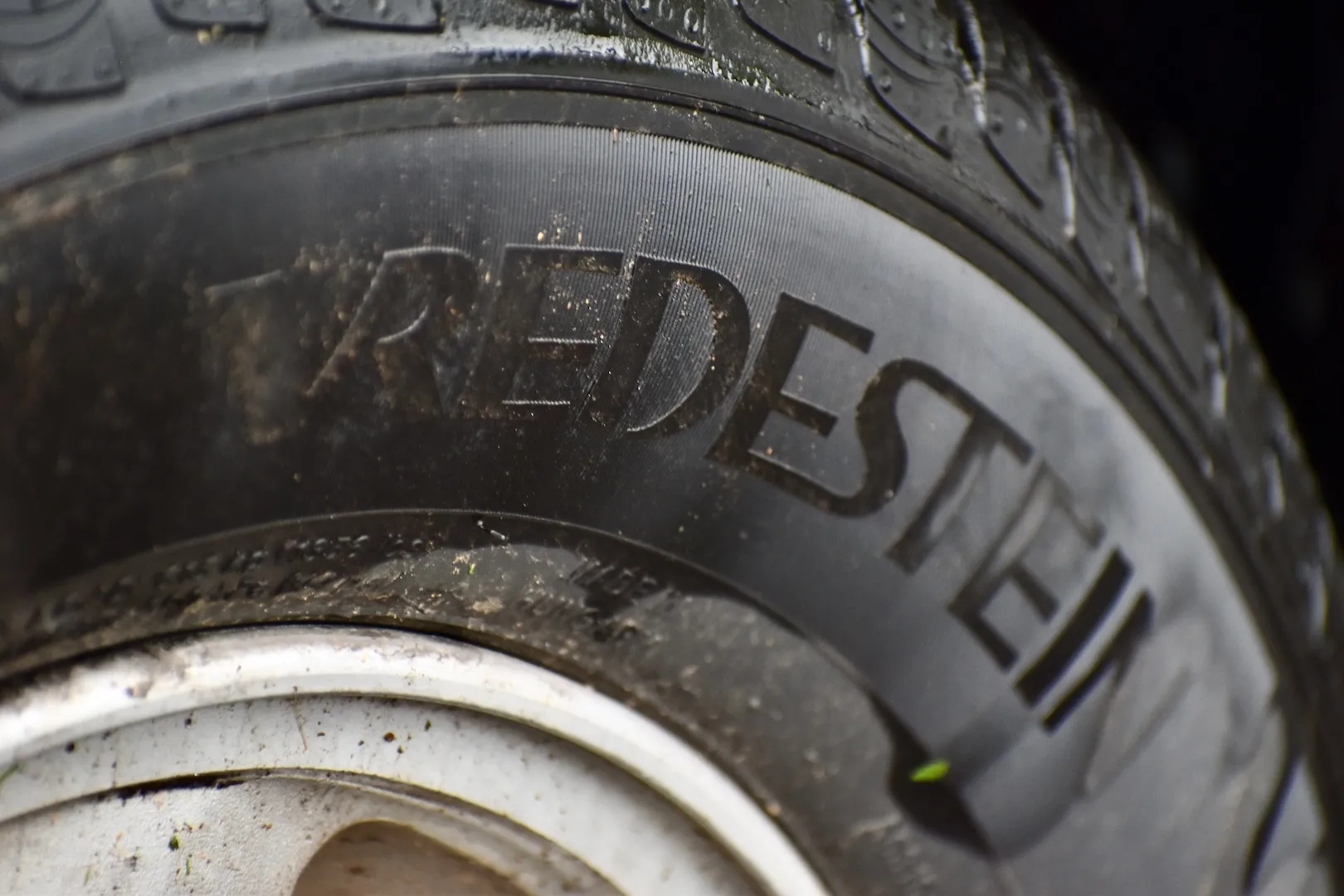

We may earn revenue from the products available on this page and participate in affiliate programs. Learn more ›
It’s now been a couple of cold, rainy seasons and thousands of miles since fitting Vredestein HiTrac All-Season tires to my classic Mitsubishi. I’ve tested them rain or shine, taken road trips, and even gotten a little oversteer where I could. Through it all, my high esteem for them hasn’t changed, though it has matured to acknowledge areas where the HiTrac isn’t a standout.
As you’ve already gathered, these HiTracs are all-season tires, which Vredestein aims at family-friendly passenger cars with a pinch of performance. They’re tailored to perform best in wet weather, so they’re useful anywhere that gets significant rain, and with a high treadwear rating of 700, they’ll endure long commutes. Yet with a speed rating of only 130 mph, they’re not for cars with serious straight-line hauling. The ideal use case would be on a sport compact like a Honda Civic Si or Subaru WRX, driven somewhere that sees heavy rain for at least part of the year.

Fittingly, I tested the HiTracs over an Oregon winter in a car sometimes referred to as the Evo minivan. We’ll skip the semantics; it has all-wheel drive, a legendary turbo engine, and a stick, so I can at least pretend it’s an Evo. As for conditions, Oregon isn’t ranked as one of the rainiest states in the country, but 41 percent of its rainfall arrives in the winter according to Climate Central, with another 27 percent coming in spring. Suffice it to say that between that and the ice storm that hit the Pacific Northwest in January, I’ve had a good spread of conditions for testing.
So, let’s start with the mundane—commuting performance.

Because the HiTrac is more sporting-oriented than many all-seasons, it has stiffer sidewalls that might not give as supple a ride as some alternatives. I say this having tested them in a cushy 195/65R15 spec, on a car with a slight suspension lift on comfort coilovers. They’re not harsh, but they’re not especially plush either.
Road noise meanwhile is modest at all speeds, though fuel mileage has been unexceptional. That could be blamed on the aggressive tread pattern, winter gas, my car’s low specified tire pressures, or my driving style, so I’ll chalk it up as average on balance. Fortunately, I haven’t observed any notable loss of tread depth during the test period, which is laudable given how I’ve treated them.
Across my canyon runs and many around-the-outside offramp passes, the HiTrac has exceeded my expectations for an all-season performance tire. Even with narrow 195s, they enabled many of my worst (read: most aggressive) habits. Traction is on par with some summer tires, and their grip threshold is broad, alerting you to the limits well before scrubbing gets severe. They do so with tactile juddering through the chassis and the classic squeal, which begins before you get yourself into serious trouble. Stopping distances are impressive too; I scarcely know what it takes to trigger ABS.
The only thing stopping me from exploring the HiTracs’ outer limits is my car itself, which leans over onto its sidewalls when it runs out of camber. Those are less of an issue in the low-grip scenario of rain though, whereas before the HiTrac feels unstoppable.

Obviously, nothing is, but I don’t think I’ve found a tire more confidence-inspiring in the rain. The road may as well be dry with them on, as hydroplaning is almost a non-factor. Stopping distances felt superb. Winter driving opportunities were limited this year, though I can still report on the full range of conditions.
Fresh snow did little to disrupt grip, while partially thawed roads presented no significant problem. Ice, on the other hand, remains something to take seriously, as I had a slightly sideways moment on a bridge in a moment of heavy braking. Competent winter performance is the absolute best you can ask for an all-season tire though, and drivers in snowier climes should just invest in dedicated winter tires.

On the whole, I’m pleased with the Vredestein HiTrac All-Seasons in this application. They do what I want most, conquering all but the worst road conditions, wearing slowly, and enhancing handling without significant sacrifice in secondary areas. That said, I wager there are more comfortable, more efficient options if you don’t have much adverse weather to contend with, or if handling isn’t a priority. Buying tires is always about balancing what you want with what you don’t on a budget, and HiTrac All-Seasons are a strong choice for modestly sporty cars driven year-round.
Got a tip or question for the author? You can reach them here: james@thedrive.com